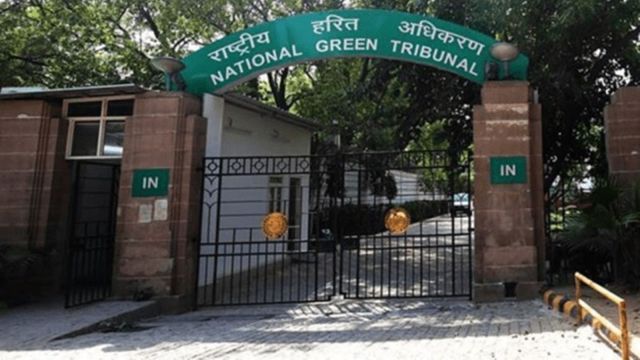The National Green Tribunal (NGT) on Wednesday ordered the Survey of India to prepare a fresh report based on satellite images to ascertain whether tree felling for the proposed 111-km-long Kanwar Marg project in Uttar Pradesh was done beyond the permitted road width of 15 metres.
The principal bench of the tribunal also ordered the Uttar Pradesh government to file an affidavit, through the additional chief secretary, environment department, to disclose if trees were cut beyond the permitted area and also clearly state the total number of trees that would be felled for the road project.

The principal bench, headed by chairperson Justice Prakash Shrivastava and consisting of judicial member Justice Arun Kumar Tyagi and expert member A Senthil Vel, was hearing the suo matter of mass tree felling for the Kanwar Marg project, also called Upper Ganga Canal Road Project, that will pass through Ghaziabad, Meerut and Muzaffarnagar.
Story continues below this ad
The Uttar Pradesh government has proposed to build the road on the right branch of the Upper Ganga canal from Murad Nagar to Purkazi and will need 222.98 hectares of protected forest land.
The bench also directed a joint committee it had constituted in August to expedite its inquiry into whether illegal and unnecessary tree cutting happened for the proposed road.
The joint committee was to ascertain answers to whether trees were cut illegally, whether the project was feasible and whether the work so far was done sticking to the permissible width of 15/20 metres. It was also ordered to ascertain the project’s potential environmental damage.
Prior to the hearing on Wednesday, the joint committee sought more time to submit its report and in an interim report, it said that 17,607 trees have been cut so far.
Story continues below this ad
In October, the tribunal had directed Survey of India to carry out an aerial survey, using drones, to find out the extent of tree cover lost within the last one year on the linear stretch of the proposed road and if possible, submit the number of trees cut in the last one year. The Survey of India filed its report comparing satellite images of the stretch from 2023 with drone images taken in October.
However, the tribunal noted on Wednesday that the comparison of images did not lead to any clear conclusions. It noted that the images of the stretch were of different scale and resolution. “From the report of Survey of India, they could not point out if any tree has been cut beyond the width of 15-20 metres or the number of trees cut,” the bench noted in its order.
The counsel and officers of Survey of India submitted to the bench that they had requested the National Remote Sensing Centre (NRSC) for satellite images of the road stretch from 2024. However, it could not be obtained. The bench thus ordered the national mapping agency to obtain the images of 2024 from NRSC and file a fresh report comparing the tree felling.
The bench also sought clarity from the Uttar Pradesh government on whether its enumeration of trees to be felled was based on the UP Protection of Trees Act, 1976. While originally, it was stated that over 1.12 lakh trees will be cut for the project, the UP government said that the number stands at 33,776 trees.
Story continues below this ad
“UP is directed to clarify whether the 33,776 trees calculated for felling was done in accordance with provisions of the UP protection of tree act or not,” the bench ordered.
“The state will file an affidavit of additional chief secretary, environment, clearly stating the number of trees which would be cut in the course of road construction,” the bench added in its order.
During Wednesday’s hearing, advocate Akash Vashishtha, who was arguing on behalf of intervenors, said that the tribunal should also ask the joint committee to pay heed to the hydrological importance of the trees along the Upper Ganga canal. Vashishtha said that the canal provides water to the key potato farming belt of UP and loss of biodiversity will hamper groundwater.









